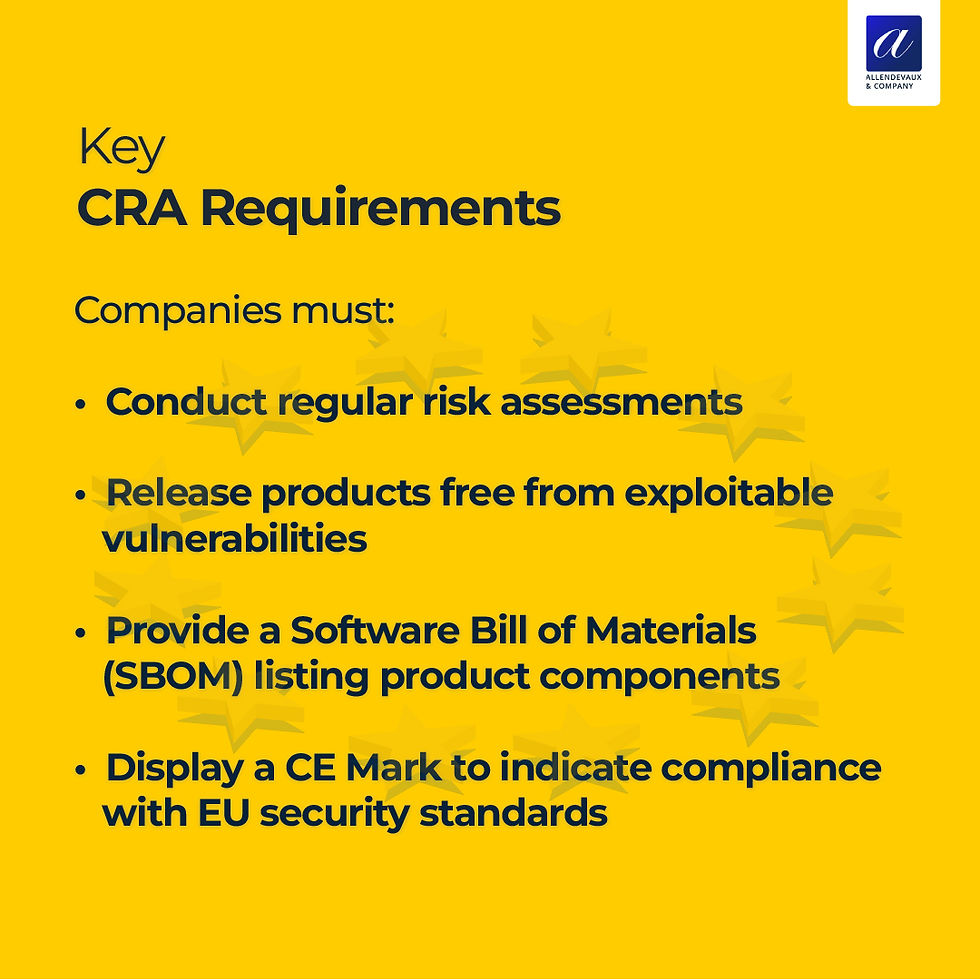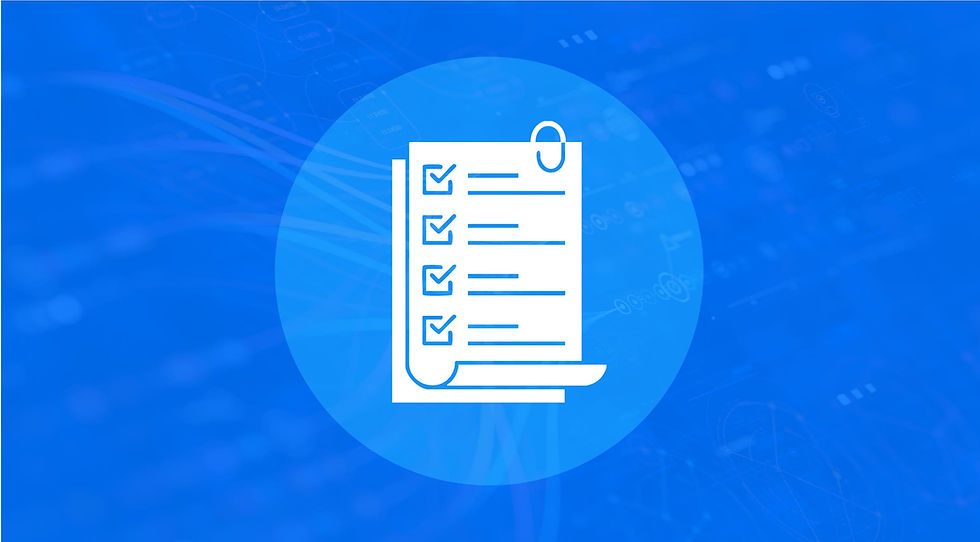European Cyber Resilience Act: Business Compliance Guide
- bakhshishsingh
- Aug 30
- 3 min read
On October 10, 2024, the European Union adopted the Cyber Resilience Act (CRA), a groundbreaking regulation designed to improve the security of digital products. With cyber threats on the rise, the CRA sets out strict obligations for manufacturers, importers, and distributors to ensure that connected devices remain secure throughout their entire lifecycle.
For businesses operating in or selling to the EU, the CRA represents both a challenge and an opportunity. Non-compliance could result in penalties and reputational damage, while early adoption can build trust, strengthen security, and offer a competitive edge.
What is the European Cyber Resilience Act (CRA)?

The CRA establishes mandatory cybersecurity requirements for digital products and services sold within the EU. Its scope covers nearly all connected devices — from laptops and smart TVs to IoT gadgets — ensuring that these products meet stringent security standards before and after entering the market.
Unlike voluntary guidelines, the CRA is legally binding and focuses on managing risks across the entire product lifecycle, from design and development to post-sale support.
Who Does the CRA Affect?

The CRA impacts a wide range of businesses, including:
Manufacturers – Responsible for designing and producing secure products.
Importers – Ensuring non-EU products meet CRA requirements before entering the EU market.
Distributors – Confirming products display the CE Mark and comply with security obligations.
Essentially, any company involved in selling digital devices in the EU must adapt to these new regulations.
Key Requirements Under the CRA

To comply with the CRA, businesses must:
Conduct Regular Risk Assessments – Identify vulnerabilities early and address them before products reach consumers.
Release Secure Products – Devices must be free from exploitable flaws at launch.
Maintain a Software Bill of Materials (SBOM) – A detailed inventory of product components to improve transparency.
Display the CE Mark – Proof that products meet EU security standards.
Provide Post-Sale Security Support – Ongoing updates and vulnerability management for consumers.
By enforcing these measures, the CRA aims to eliminate insecure devices that could become easy targets for attackers.
CRA Timeline for Compliance

Businesses must act quickly to prepare for compliance:
Adoption Date: October 10, 2024
Act Enters Into Force: 20 days post-publication
Reporting Requirements: Begin 12 months after enforcement
Full Compliance Deadline: 24 months after enforcement
This means companies have just two years from adoption to fully align with CRA obligations — a tight window considering the scope of changes required.
Main Provisions of the CRA

Covered Devices: Most connected digital products, including consumer electronics and enterprise hardware.
Excluded Devices: Products already covered by other EU regulations (e.g., medical devices, vehicles).
Record-Keeping: Businesses must maintain SBOMs and technical records for at least 10 years.
Compliance Testing: Products undergo risk-based conformity assessments before entering the market.
These provisions ensure long-term accountability and standardization across the EU digital economy.
How to Prepare for CRA Compliance

Organizations should begin preparing immediately. Steps include:
Inventory Affected Products – Identify all digital devices subject to CRA requirements.
Educate Teams – Ensure staff understand CRA obligations and their roles.
Develop SBOMs – Create detailed records of product components.
Conduct Vulnerability Assessments – Test products regularly for security flaws.
Establish Ongoing Monitoring – Track emerging risks and patch vulnerabilities quickly.
By adopting these practices early, businesses can minimize compliance risks and demonstrate leadership in cybersecurity.
Final Thoughts
The European Cyber Resilience Act is more than just regulation — it’s a milestone in global cybersecurity policy. By enforcing stronger standards, the EU is pushing businesses toward greater accountability, transparency, and resilience.
For companies, compliance is not just about avoiding penalties — it’s about building trust, credibility, and long-term competitiveness in a digital-first marketplace.
At Allendevaux and Company, we specialize in helping organizations navigate compliance challenges like the CRA. From SBOM creation to vulnerability assessments and risk management, we ensure your products are secure, compliant, and market-ready.
Secure your products. Protect your customers. Lead with resilience.





Comments